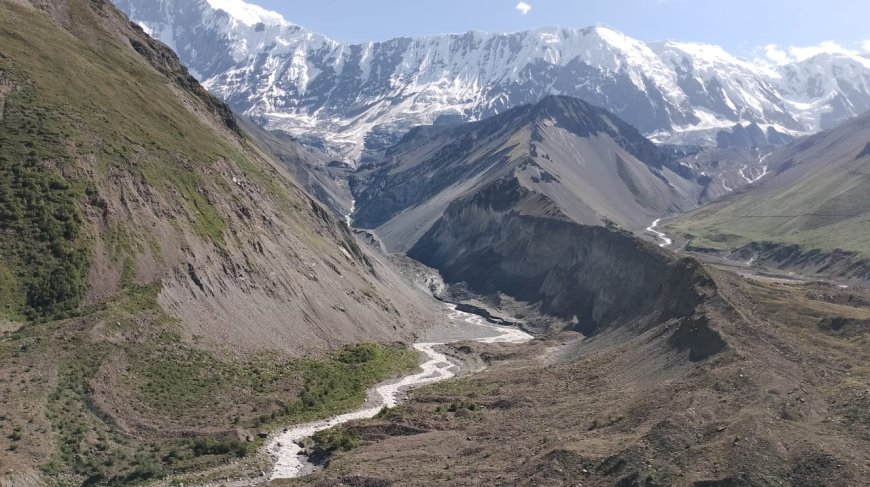How to Escape Annapurna’s Killer Myths and Lame Advice
Think Annapurna is only for elite climbers or dangerously unpredictable? Think again. Bust common trekking myths and bad advice with real tips for a smarter, safer Himalayan adventure.

How to Escape Annapurnas Killer Myths and Lame Advice
The Himalayan Annapurna region is one of the most beautiful trekking areas in the world, but its also veiled in myths that either scare away or mislead trekkers. From warnings of death zones to absurd claims that you need to be a professional to survive the trials, the internet is filled with falsehoods and antiquated advice. Most potential trekkers either cancel entirely or end up training for the wrong challenge, thanks to misinformative content or sensational stories. The truth? Annapurna is a beast accomplished alpinists dream to have on their resume, but is also manageable if its treated with clear-eyed planning and respect for the environment.
This blog hopes to remove some of the scaremongering and dodgy creds. Whether you are a first-timer trekker or a seasoned adventurer, what not to believe is just as important as what to pack. We will out the killer myths, destroy the lame advice, and pull back the curtain on simple, powerful insights to help you plan smarter, not harder. In which will I be able to walk into the Annapurna place with grounded self-belief instead of a frightening dose of truth or fluff? Permits take the thriller out of the technique, dispel the confusion, and enable you to experience certainly one of Nepals maximum iconic trekking routes the way it is meant to be informed, stimulated, and safe.
Myth: Annapurna is More Dangerous Than Everest
Annapurna is known for being deadly though much less so for trekkers than for climbers. The Annapurna Massif is home to one of the most treacherous mountains to conquer, yet trekking routes such as the Annapurna Circuit and Annapurna Base Camp are comparably safe. High-altitude mountaineering is often confused with trekking and exaggerated anxiety about risks occur. With adequate acclimatization and pacing, and good luck, most trekkers make it through without incident of serious illness. Dont let statistics about climbing fatalities get mixed up with those about trekking trails. The trek is difficult, yes but not a death sentence. Observe the mountains, but dont let fear ensnare you.
Myth: Its For The Hard Core Hikers Only
Theres a misconception that the Annapurna trails are reserved for die-hard adventurers. Thats just no longer true. Though youll want to be fairly matched, the trek doesnt require rock-mountain climbing or ultra-marathon prowess. It only takes time and a slow rise in altitude and mental fortitude. Some thousands of FKT-style regular travelers, among them seniors, complete the circuit each year. It is relatively easily accessible to most thanks to the hiking infrastructure (teahouses, guides), and with determination and a little prep can be conquered. Dont let these myths about fitness hold you back, though: Train smart, walk slow, and youll be surprised at what you can handle at altitude.
Lame Advice: Go with the Flow, Man.
This is to say: that spontaneity sounds lovely and spontaneous, but its a lousy approach in the Himalayas. Proper planning is the order of the day due to weather, altitude, and logistics. Some guidance is in the form of Just rock up in Pokhara and see what happens that can leave you feeling under-prepared, or worse, stuck. In case youre without an allowance, the proper equipment, or an acclimatization plan, youre taking more than a chance on an inconvenience. Even in case, you are traveling for personal, research, a plan B is essential. Going with the flow is for the beach, not the mountains. Do your homework, pick a realistic itinerary, and be prepared to be flexible within a schedule!
The Myth: Acclimatization Is Just Killing Time
This advice is not simply bad it is dangerous. Hurrying through altitude gains is one of the main culprits of AMS (Acute Mountain Sickness), and no remedy, no matter how fit, is immune. Some believe that extra acclimatizing days are superfluous when the truth is that theyre essential to your safety and enjoyment. A good itinerary allows for built-in rest days for your body to adjust. Dismiss this myth and you might end up getting helicoptered out instead of making it to the Thorong La Pass. Time spent acclimatizing is never lost its what gets you through the day.
Lame Advice: Porters Are for Weaklings Only
It does not make you weak to hire a porter it makes you a smart trekker. Youre not proving anything lugging a 20 kg pack uphill at 4,000 meters. Porters are great for the community because they contribute to the local economy and allow you to actually enjoy the trek without tiring yourself out. Trekking is supposed to be fun and not an exercise in self-punishment. And youll have more energy for the trails and fewer opportunities for injury. A lot of people who attempt to tough it out end up slowing down or giving up well before they intend to. Sharing the load doesnt diminish the achievement it ensures that the achievement is sustainable and respectful of both the environment and the local workforce.
Myth: You Must Sign Up for an Expensive Guided Tour
Most believe they have to pay thousands for a foreign-arranged guided tour to trek Annapurna safely. Thats outdated thinking. Nepals neighborhood agencies provide less expensive, 86f68e4d402306ad3cd330d005134dac assistance, with nicely-marked and teahouse-assist trails. Its additionally feasible for solo trekkers, couples, and small organizations to make the circuit without or with guides, depending on their comfort level. Should you hire a guide, then hiring locally means your costs are kept under control and you are contributing to the community. You dont need a Western price to enjoy a world-class experience. What you dont need is a TV crew and a bucketful of chum, but you do need research, the right gear, and realistic expectations.
Conclusion
Trekking Annapurna is not about risking death or fulfilling some macho adventure fantasy its about immersing yourself in one of the worlds most exquisite landscapes with eyes wide open. By casting aside myths and bad advice, youre challenging yourself to enjoy this trail the way its meant to be enjoyed: incredible, humbling, and doable. Travel lightly, prepare wisely, and respect the journey and you will find that Annapurna gives you more than it takes.
What are the records of Nanga Parbat?
Nanga Parbat, the Killer Mountain, owes its ominous name to a series of fatal early expeditions, particularly the Thursday's army crew of German climbers in the 1930s. 1953 - First successful solo ascent by Hermann Buhl, without oxygen! Famed for its steep terrain and exceptional avalanche situations, the mountain has taken many lives, ranking as one of the maximum feared ascents in Himalayan records.
In what variety is Nanga Parbat positioned?
Nanga Parbat lies within the western Himalayas, which in turn are a part of the Himalayan range, and is situated in Pakistan's Diamer District, Gilgit?Baltistan. Its the 9th-tallest mountain in the world, at eight,126 meters. It's the westernmost terminus of the Himalayas, where they overlap with the Hindu Kush (and to a lesser extent the Karakoram), forming one of the international's most powerful mountain crossroads.
What is the deadliest mountain in the world?
Nanga Parbat is widely called the "Killer Mountain" due to the excessive number of early deaths on the mountain, earlier than its first ascent in 1953. But Annapurna I now has the very best fatality-to-summit ratio of any eight,000-meter peaks in the interim. Eachare considerably unstable; however, Nanga Parbats lengthy records of lethal tries gave it the infamous shorthand that lingers these days.
What Is the Hard Part of Annapurna?
On the trek to Annapurna Base Camp, people generally tend to locate the hardest part is the strenuous stony stair segment, especially as you are ascending towards Bamboo from Chhomrong. The ones with lengthy, lopsided ascents will make you work for each single step. If youre within the center of the Annapurna Circuit, the toughest element is crossing the Thorong La pass (5,416m), the factor wherein the skinny air, bloodless, and fatigue join forces at high elevation.








&srotate=0)























